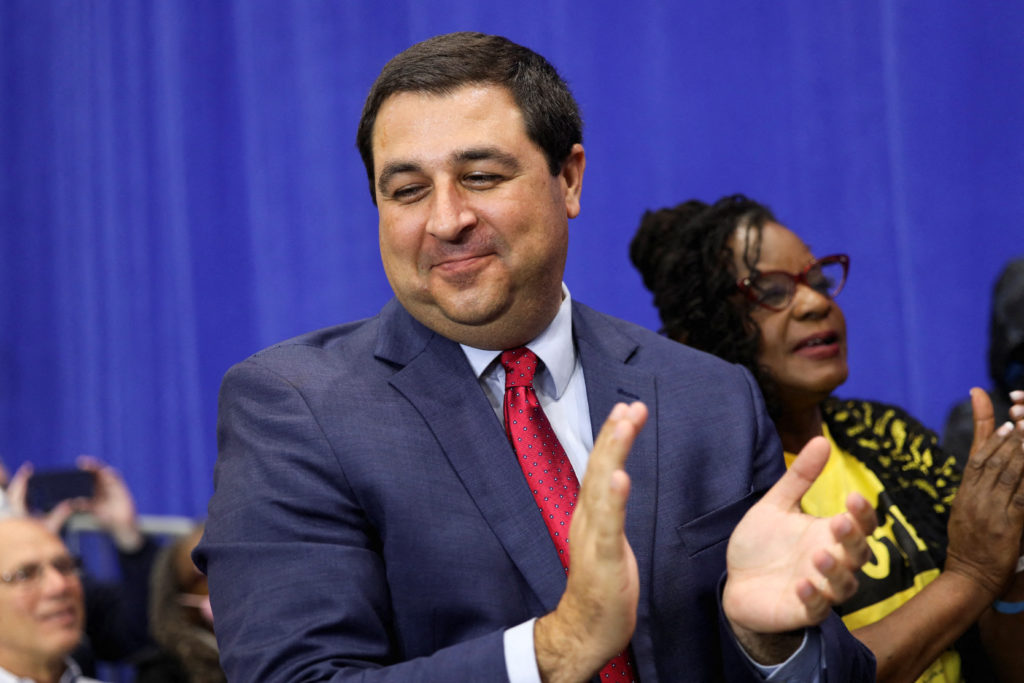
Attorney General Josh Kaul attends a rally with Wisconsin Governor Tony Evers before the mid-term elections in Milwaukee, Wisconsin, U.S. October 29, 2022. REUTERS/Daniel Steinle
The Wisconsin Supreme Court, led by its liberal majority, has struck down the state’s 176-year-old abortion ban, ruling 4-3 that it was superseded by newer laws regulating the procedure. This decision, announced on Wednesday, marks a significant shift in Wisconsin’s legal landscape regarding abortion rights.
The ruling was largely anticipated as liberal justices currently hold sway in the court. Notably, one justice had pledged to uphold abortion rights during her campaign two years ago, and the justices had previously criticized the ban during oral arguments last November.
Historical Context and Legal Background
The statute in question, enacted in 1849, was interpreted as a near-total ban on abortions, criminalizing the act for anyone other than the mother or a doctor in a medical emergency. This ban was effectively nullified in 1973 following the U.S. Supreme Court’s Roe v. Wade decision, which legalized abortion nationwide. However, the ban was never officially repealed, and some conservatives argued it was reinstated after the 2022 Supreme Court decision overturning Roe.
Wisconsin Attorney General Josh Kaul, a Democrat, challenged the ban in court, arguing that subsequent abortion laws enacted during Roe’s nearly 50-year tenure superseded the ban. These included a 1985 law allowing abortions until viability, defined as when a fetus can survive outside the womb with medical assistance, typically after 21 weeks of gestation.
The Court’s Rationale and Dissent
The majority opinion, penned by Justice Rebeca Dallet, concluded that the legislature had “impliedly repealed” the 1849 ban by enacting comprehensive legislation covering all aspects of abortion, including the conditions under which healthcare providers may perform them. Dallet wrote, “That comprehensive legislation so thoroughly covers the entire subject of abortion that it was clearly meant as a substitute for the 19th century near-total ban on abortion.”
Sheboygan County District Attorney Joel Urmanski, a Republican, defended the 1849 ban, arguing it could coexist with newer restrictions. However, Dane County Circuit Judge Diane Schlipper had previously ruled that the ban outlawed only non-consensual feticide, not consensual abortions.
In a dissenting opinion, Justice Annette Ziegler criticized the ruling, describing it as “a jaw-dropping exercise of judicial will.” She accused the liberal justices of succumbing to personal preferences and political pressures, arguing that the court was overstepping its role.
Public Opinion and Political Implications
Public sentiment in Wisconsin appears to favor abortion rights. According to AP VoteCast, 62% of Wisconsin voters in the 2024 election believed abortion should be legal in all or most cases. This aligns with the broader national trend of increasing support for abortion access since the overturning of Roe v. Wade.
Heather Weininger, Executive Director of Wisconsin Right to Life, expressed disappointment with the ruling, stating, “To assert that a repeal is implied is to legislate from the bench.” Meanwhile, Planned Parenthood of Wisconsin had sought a Supreme Court decision on the constitutionality of the 1849 ban, but the court dismissed the case without explanation, drawing further criticism from conservative justices.
Future Outlook and Political Dynamics
The decision ensures that abortions will remain legal in Wisconsin, providing clarity and certainty for healthcare providers and patients. This ruling may influence future legislative and judicial battles over abortion rights in the state.
Democratic-backed Susan Crawford’s recent victory over conservative Brad Schimel for an open seat on the court secures the liberal majority until at least 2028. Although Crawford has not yet been sworn in, her presence will likely bolster the court’s liberal stance on key issues.
As Wisconsin navigates this new legal terrain, the state’s political and judicial landscape continues to evolve, reflecting broader national debates over reproductive rights.







